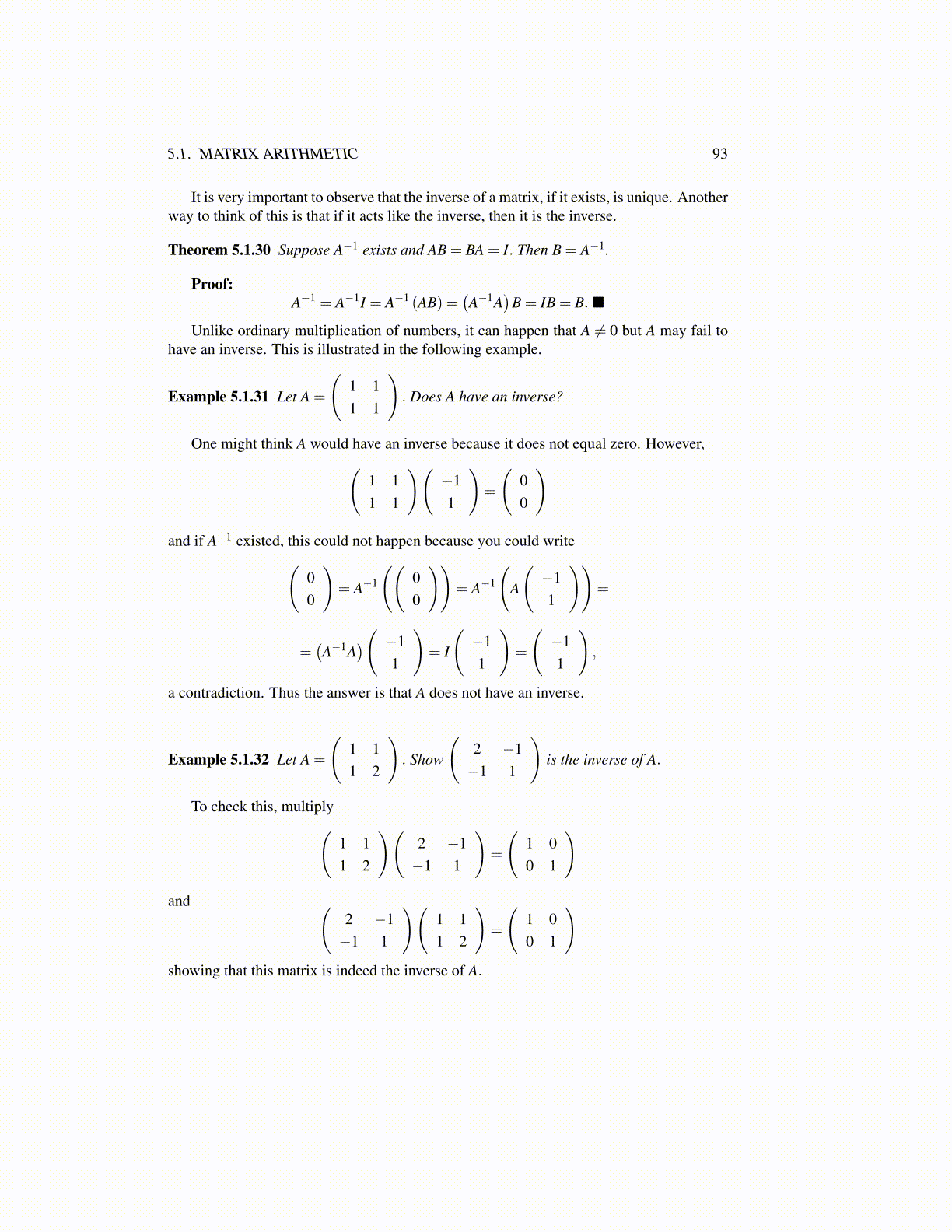
5.1. MATRIX ARITHMETIC 93
It is very important to observe that the inverse of a matrix, if it exists, is unique. Anotherway to think of this is that if it acts like the inverse, then it is the inverse.
Theorem 5.1.30 Suppose A−1 exists and AB = BA = I. Then B = A−1.
Proof:A−1 = A−1I = A−1 (AB) =
(A−1A
)B = IB = B. ■
Unlike ordinary multiplication of numbers, it can happen that A ̸= 0 but A may fail tohave an inverse. This is illustrated in the following example.
Example 5.1.31 Let A =
(1 11 1
). Does A have an inverse?
One might think A would have an inverse because it does not equal zero. However,(1 11 1
)(−11
)=
(00
)
and if A−1 existed, this could not happen because you could write(00
)= A−1
((00
))= A−1
(A
(−11
))=
=(A−1A
)( −11
)= I
(−11
)=
(−11
),
a contradiction. Thus the answer is that A does not have an inverse.
Example 5.1.32 Let A =
(1 11 2
). Show
(2 −1−1 1
)is the inverse of A.
To check this, multiply(1 11 2
)(2 −1−1 1
)=
(1 00 1
)
and (2 −1−1 1
)(1 11 2
)=
(1 00 1
)showing that this matrix is indeed the inverse of A.